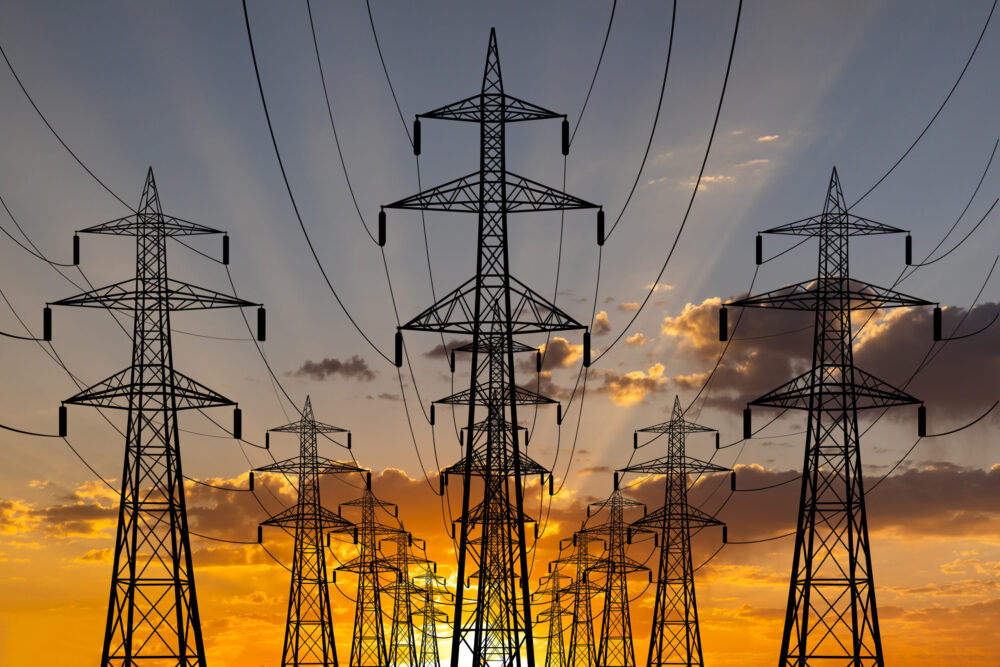Gov. Joe Lombardo let a seat on the three-member Public Utility Commission go vacant, allowing an additional avenue for the commission’s rulings to be challenged. (Photo by Anton Petrus/Getty Images)
Policy, politics and progressive commentary
When NV Energy CEO Doug Cannon pitched Nevada lawmakers in 2021 on Greenlink, a massive transmission line project estimated at the time to cost $2.5 billion, he promised “Nevadans will not be asked to pay for this investment until at least five to six years down the road.”
Now, with the project delayed about a year and estimated at $4.2 billion (not including monthly interest carrying costs, which the utility will recover from customers), another $1 billion in capital projects proposed, and against the backdrop of a credit downgrade of Sierra Pacific, its northern Nevada subsidiary, contrary to Cannon’s assertion, the utility is seeking financial incentives to recoup costs before Greenlink comes on line.
The utility’s Integrated Resource Plan, a blueprint for meeting growing energy needs filed May 31, asks for two incentives.
The first would add the cost of construction in progress to electric rates before the project is completed, which is usually not permitted because it requires customers to pay for a service not yet provided. The second would allow NV Energy to recover the cost of depreciation on Greenlink projects that are placed in service before the utility files a general rate case. Those costs are generally not recoverable.
NV Energy spokeswoman Meghin Delaney said in a statement that including construction work in progress in the base rate “helps keep overall project costs lower and also helps smooth the transition of these costs into rates to lower any potential rate shock.”
Delaney notes the PUC has approved a similar request. The last time is believed to have been in 2006, when NV Energy was recovering from below-investment grade ratings resulting from the energy crisis of the early 2000s.
Costs will be lower, as Delaney notes, however that’s because ratepayers, rather than shareholders, will be financing the cost of construction interest.
“NV Energy anticipates recovering the costs of this project over 70 or more years, thus reducing the impact on customer rates,” Delaney said.
But experts say the utility is not making a concession to ratepayers, as depreciation rates for NV Energy’s transmission lines are already close to 70 years, according to a 2023 filing with the Federal Energy Regulatory Commission. The longer the depreciation period, the longer the utility earns a return.
The utility is also seeking to construct gas peaker plants at a cost of close to $600 million and to purchase more than one gigawatt each of solar power and battery storage capacity at an initial cost of about half a billion dollars.
‘Hiding the ball’
“The requested resources present a balanced portfolio that will reduce NV Energy reliance on expensive and unreliable market resources,” Cannon said in a news release last week of the company’s resource plan.
Advanced Energy United, a trade association for clean energy companies, says NV Energy’s penchant for opacity keeps ratepayers in the dark as to whether the utility is acting in their best interest.
“It’s an issue that we’ve been fighting in Nevada for years,” says Brian Turner of the trade group. “NV Energy gets to do things behind closed doors, and we think, frankly, it ends up with them hiding the ball and being able to control the flow of information to their benefit.”
The utility lacks transparency “in the procurement of renewable resources, which in general, our organization supports, and in the decision to propose more gas plants at the Valmy station,” which it doesn’t support, according to Turner.
He notes the purchase agreements for solar and battery storage proposed in the IRP “are very attractive projects. They came in at a very good price – much cheaper than fossil fuel.”
But he says the utility “could have done more. NV Energy runs an opaque, unreliable and unpredictable process. They don’t get many bids from developers, from our members who would love to come into Nevada and help develop the low cost resources that are available there.”
The Current reported last year that compared with other electric utilities in the western U.S., even its sister company PacifiCorp, NV Energy is lagging when it comes to procuring competitive bids, and in the process, failing to get the best deals for its customers, resulting in higher than necessary rates.
In its resource plan, NV Energy declared much of its competitive procurement information confidential, noting its release could negatively impact the utility’s ability to solicit competitive offers from bidders.
Turner says Advanced Energy United’s members are already “not participating in the bidding process because NV Energy hides the ball. Other states have a much better process and get a much better result, leading to lower costs, and more abundant, clean resources that we think NV Energy should be taking advantage of.”
Advanced Energy United is calling on the Nevada Public Utilities Commission to demand transparency from NV Energy in its quest to add power resources to meet projected population growth, says Turner. “By law, the process is designed to ensure Nevadans are getting the best projects at the best price.”
Turner praised NV Energy’s emphasis on demand-side management, which allows consumers to get paid by the utility to “dispatch a battery in your garage, in your neighbor’s garage, in your electric vehicle, your smart thermostats, smart heaters – all these devices. If the utility can turn those up and down, then it serves the same purpose as a power plant, but only much cheaper.”
The Inflation Reduction Act has significantly lowered the cost of batteries for consumers, Turner says.
The PUC has about six months to consider NV Energy’s application.
The post NV Energy seeks to prematurely recover costs of $4.2 billion transmission line appeared first on Nevada Current.

